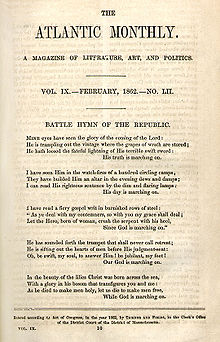"She's A Rainbow"
She comes in colors ev'rywhere;
She combs her hair
She's like a rainbow
Coming, colors in the air
Oh, everywhere
She comes in colors
She comes in colors ev'rywhere;
She combs her hair
She's like a rainbow
Coming, colors in the air
Oh, everywhere
She comes in colors
Have you seen her dressed in blue?
See the sky in front of you
And her face is like a sail
Speck of white so fair and pale
Have you seen a lady fairer?
She comes in colors ev'rywhere;
She combs her hair
She's like a rainbow
Coming, colors in the air
Oh, everywhere
She comes in colors
Have you seen her all in gold?
Like a queen in days of old
She shoots her colors all around
Like a sunset going down
Have you seen a lady fairer?
She comes in colors ev'rywhere;
She combs her hair
She's like a rainbow
Coming, colors in the air
Oh, everywhere
She comes in colors
She's like a rainbow
Coming, colors in the air
Oh, everywhere
She comes in colors
"She's a Rainbow" is a song by the Rolling Stones and was featured on their 1967 album Their Satanic Majesties Request.It has been called "the prettiest and most uncharacteristic song" that Mick Jagger and Keith Richards wrote for the Stones, although somewhat ambiguous in intention.
The song starts with a Carnival barker saying:
"Alright there now listen very closely for how to play the game, I'll tell you how to do it.
Now luv, all you gotta do, luv, is when the whistle's blown, I want you to give one spin, one spin only on your ball.
Any prize, take what you like. One winner, one prize, the pick o' th' stall. Are you all ready ?"
The song includes rich lyricism, vibrant piano by Nicky Hopkins and Brian Jones' use of the Mellotron. The second verse includes:
Have you seen her all in gold,
Like a queen in days of old?
She shoots colours all around
like a sunset going down.
Have you seen a lady fairer?
John Paul Jones, later of Led Zeppelin, arranged the strings of this song during his session days. Backing vocals were provided by the entire band except for Charlie Watts. The lyrics in the chorus share the phrase "she comes in colours" with the song of that title by Love, released in December 1966.
The song begins with the piano playing an ascending scale, which returns throughout the song as a recurring motif. This motif is developed by the celesta and strings in the middle 8. Humorous and ambiguous devices are used, such as when the strings play out-of-tune and off-key towards the end of the song, and when the other Stones sing their "La La's" like little children.
"She's a Rainbow" was released as a single in December 1967 and went to No. 25 in the United States. It has regularly featured on Stones' hits compilations, including Through the Past, Darkly (Big Hits Vol. 2) (1969), More Hot Rocks (Big Hits & Fazed Cookies) (1972), 30 Greatest Hits (1977), Singles Collection: The London Years (1989), Forty Licks (2002), and GRRR!(2012).[6] It was performed occasionally on the 1997–98 Bridges to Babylon Tour. The Stones also played the song by public request in Santiago, Chile and São Paulo, Brazil during their América Latina Olé Tour 2016 in February 2016.
Was used in the 1999 Apple iMac ad "Colors"
In the 2011/12 season finale of Saturday Night Live, host Mick Jagger was in a "graduation" skit where the band Arcade Fire and the SNL cast performed "She's a Rainbow" as a tribute to departing cast member Kristen Wiig. In the sketch, Wiig is a student who was held back and is finally graduating after seven years to leave SNL to become a nun. Although Jagger does not sing "She's a Rainbow", he returns at the end of the skit, along with a number of SNL alumni, to join in the song "Ruby Tuesday".
In the first episode of Legion the song is used during a sequence.
The song is used at the end of the third episode of the eighth season of American Horror Story, where it displays Madison Montgomery, Myrtle Snow, and Cordelia Goode from American Horror Story: Coven entering Outpost 3 to find the missing sisters of their coven.
The song was used in 1999 Apple commercials for the colorful iMac computers.
The song is used in a 2018 commercial by Dior.
The song is used in a 2018 commercial for the 2019 Acura RDX.
Personnel
Mick Jagger – vocals, percussion
Keith Richards – acoustic guitar, backing vocals
Brian Jones – Mellotron, percussion, backing vocals
Bill Wyman – bass, backing vocals
Charlie Watts – drums, percussion
Nicky Hopkins – piano, celesta
String arrangement by John Paul Jones
Charts
| Chart (1967–68) | Peak position |
|---|---|
| Austria (Ö3 Austria Top 40)[12] | 8 |
| Belgium (Ultratop 50 Flanders)[13] | 13 |
| Canada Top Singles (RPM)[14] | 9 |
| Netherlands (Single Top 100)[15] | 2 |
| Switzerland (Schweizer Hitparade)[16] | 3 |
| US Billboard Hot 100[17] | 25 |
| Chart (2007) | Peak position |
| Denmark (Tracklisten)[18] | 25 |
| Switzerland (Schweizer Hitparade)[16] | 91 |




